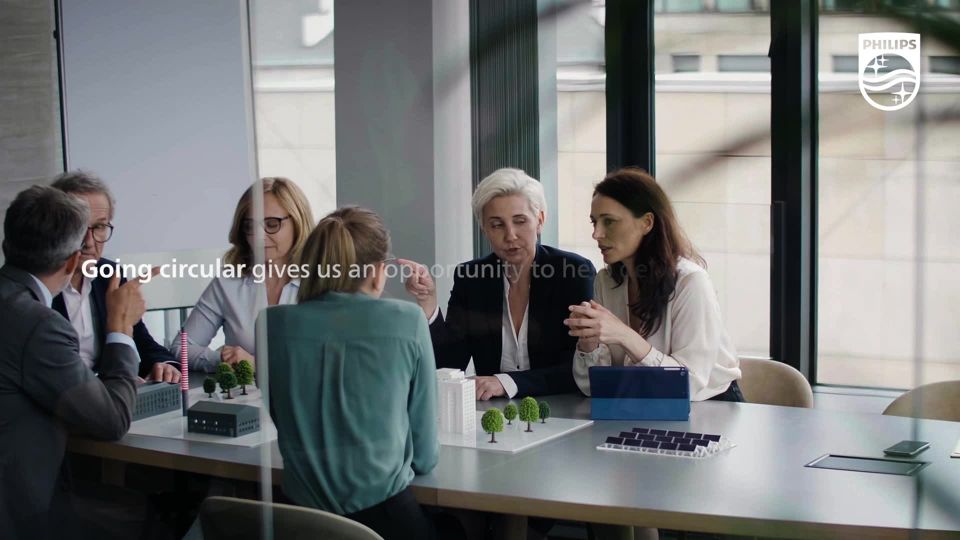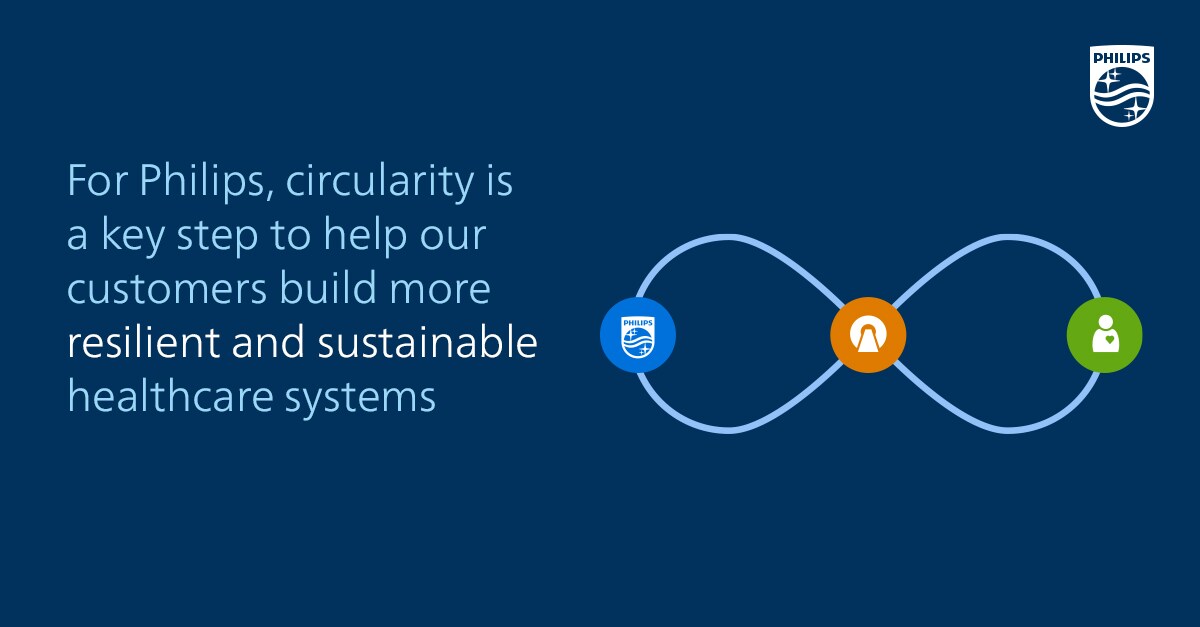Cutting healthcare carbon emissions for a sustainable future
Jul 06, 2022 - Reading time 7-9 minutes
Understanding healthcare emissions and the pathways to reducing Australia’s carbon output
Australia may seem like a small actor on the global climate change stage, but our healthcare system plays more than a minor role when it comes to carbon emissions. A Lancet Planetary Health (1) study found the healthcare sector was responsible for 7 per cent of Australia's total emissions, with the authors suggesting we need carbon-efficient procedures to reduce the sector’s environmental impact.
Healthcare companies and consumers can drive change to enhance the sustainability of our healthcare system, while sector leaders and decision makers can pursue sustainable practices (such as circular models) to achieve sustainability objectives. Innovative thinking and partnerships between stakeholders can deliver meaningful healthcare emissions reductions.
The carbon output of healthcare systems
Australia’s health system faces a dual challenge around climate change, notes the Climate Change and Australia’s Healthcare Systems report (2) commissioned by the Royal Australian College of Physicians.
One side of the equation is the human impact. Fiona Armstrong, Executive Director of the Climate and Health Alliance, points out Australia is extremely vulnerable to climate change’s effects. In her article in The Conversation (3), she notes impacts such as extreme heat, bushfires and smoke pollution adversely affect people in numerous ways, while infectious diseases like COVID-19 are expected to increase in a warming world.
On the flipside is the healthcare system’s contribution to Australia’s carbon footprint, which includes:
Scope 1 emissions:
• Stationary combustion such as fuels used for heating and cooling
• Mobile combustion from company vehicles
• Fugitive emissions such as refrigeration or air-conditioning unit leaks
• Process emissions released during healthcare-related manufacturing processes.
Scope 2 indirect but owned emissions, which largely come from generation of purchased energy.
Scope 3 indirect, non-owned emissions such as:
• Upstream activities including business travel, operational waste, and transportation and distribution activities.
• Downstream activities such as investments and consumer product disposal.
Source: Plan A Academy (3)
To ensure our healthcare systems are resilient and sustainable, Australia must work towards reducing these outputs. As a company, we recognise the need to go beyond own operations and drive climate action throughout the value chain. This requires a new way of engaging with our suppliers and customers to ensure we minimize our environmental impact.

Factors contributing to healthcare’s carbon output
While healthcare carbon emissions come from numerous sources, many of these can be addressed and improved upon. Global insurer Zurich (5) points out that most of a company’s total carbon emissions are typically generated within their supply chains, either upstream or downstream, so this is where the most positive impact can be made.
They suggest two strategies can help companies reduce supply chain emissions without significantly increasing consumer costs.
1. Gathering data – to support transparent reporting and provide information to customers.
2. Reviewing packaging – this is a huge contributor to emissions and amenable to change.
Importantly, they note consumer sentiment towards net-zero supply chains is increasingly favourable. One survey (6) found that 70 percent of people would pay a 5 percent premium for sustainably produced products.
Similarly, a report by McKinsey Sustainability (7) estimated that a typical consumer company’s supply chain accounts for more than 80 percent of its greenhouse-gas emissions. They also note poor sustainability performance – measured in environmental and social impact – can slow a company’s growth.
They suggest three strategies for improving supply chain sustainability.
1. Locate and measure critical issues across the entire supply chain.
2. Link supply-chain sustainability goals to a global agenda based on scientific recommendations.
3. Support suppliers to manage their impact and monitor their performance.
Effective collaboration is another way to drive emissions reductions. When stakeholders rally around a united vision, they can brainstorm, share strategies and hold each other accountable. A unified voice also has greater power to influence key factors like funding limitations and shortcomings with monitoring and reporting procedures.
Leaders can drive innovation for meaningful change
Healthcare leaders play a vital part in driving change from the top down. Implementing innovative measures, such as circular supply chains, can create meaningful benefits for current and future generations.
Circular economic models provide a framework for tackling climate change and are supported by the transition to use of renewable energies and materials.
Aside from clear sustainability benefits, these systems have numerous other advantages. A study by the Ellen MacArthur Foundation (8) found that by 2025, over USD 1 trillion per year could be generated for the global economy, and 100,000 new jobs created, if companies focused on establishing circular supply chains.
Deloitte (9) note that in addition to cost savings, other benefits of circular supply chains for companies include enhanced compliance, reduced risk related to supply chain disruption (such as occurred during COVID-19), new market opportunities based on increased consumer demand for sustainable products, and reputational benefits.

At Philips, we’re committed to creating sustainable futures. We successfully met all the targets of our 2016 - 2020 ‘Healthy people, Sustainable planet’ program, with key achievements including carbon neutrality in our operations (with 100% of our electricity derived from renewable sources) and recycling 90% of our operational waste.
We’re also leading progress towards circular economies, with 16% of our sales coming from circular revenues in 2021. We’re playing a key role in the Platform for Accelerating the Circular Economy (PACE), setting global Action Agendas, and working to embed circular thinking and ways of working.
As part of our commitment to the World Economic Forum’s Capital Equipment pledge, we have fulfilled our commitment to close the loop for large medical systems equipment by offering trade-ins for all global deals won, and responsibly repurposing/recycling components and materials.
We also work alongside our suppliers, building their capacity to reduce their carbon emissions. Our approach has improved the sustainability performance of suppliers in the program by 36%.
We encourage other healthcare companies, customers and supply chain partners to commit to and deliver on climate actions based around scientific targets, and provide proof of progress through ongoing, transparent and in-depth reporting.
Real change is within reach
While Australian healthcare has many drivers of carbon output, meaningful change is within reach if innovative methods are adopted. By looking to circular models, supporting supply chain partners and collaborating with other stakeholders, leaders can positively contribute to both sides of the healthcare and climate change equation.
As leaders in sustainability, we aim to help our partners reduce their impact on the environment while supporting the development of equitable, inclusive and resilient healthcare.
Stay up to date and subscribe
Sign up to stay informed and receive information on healthcare innovation, straight to your inbox
1)https://www.thelancet.com/journals/lanplh/article/PIIS2542-5196(17)30180-8/fulltext
2) https://www.racp.edu.au/docs/default-source/advocacy-library/climate-change-and-australias-healthcare-systems-a-review-of-literature-policy-and-practice.pdf
3) https://plana.earth/academy/what-are-scope-1-2-3-emissions/
4) https://theconversation.com/health-care-contributes-7-to-australias-carbon-emissions-but-health-is-missing-from-our-cop26-plan-170624
5) https://www.zurich.com/en/knowledge/topics/climate-change/how-to-reduce-carbon-in-our-supply-chains
6) https://www.bcg.com/publications/2020/supply-chain-needs-sustainability-strategy
7) https://www.mckinsey.com/business-functions/sustainability/our-insights/starting-at-the-source-sustainability-in-supply-chains
8) https://ellenmacarthurfoundation.org/towards-the-circular-economy-vol-3-accelerating-the-scale-up-across-global
9) https://www2.deloitte.com/content/dam/Deloitte/ch/Documents/strategy-operations/deloitte-ch-en-procurement-in-a-circular-economy.pdf








